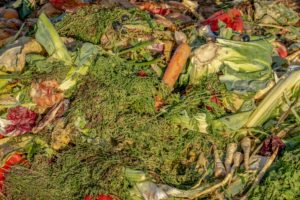Composting requires little effort in exchange for numerous benefits, making it a no brainer to start composting at home or in any setting that produces waste. Composting is good for the environment, reduces waste, and produces top quality, nutrient-rich soil that can be used in various gardening practices.
What Is Composting?

Composting is the process of recycling food and organic matter that would’ve otherwise been thrown out, giving it a new purpose. This natural process produces compost, which looks like ordinary gardening soil but jam packed with nutrients.
Composting can set gardeners up for garden success by improving soil health, producing a natural, organic byproduct that is safe and chemical-free. It also reduces waste we produce at home, cuts down on greenhouse gas emissions, conserves water and helps keep food waste out of landfills.
How to Make Compost

Composting can be done in small or large-scale capacities, and depends on factors such as:
- How much space is available to compost
- Amount of time dedicated to composting
- Quantity of waste used for compost pile
- Weather conditions
Once the above factors are taken into consideration, a composting method can be determined. There are various methods of composting to create soil not only for home use, but also for farms or any public setting that produces waste such as offices, schools or restaurants.
Top 5 Composting Methods

The composting methods we will focus on are small-scale composting methods, done at the household level to manage waste, including household food waste and yard waste.
If you’re someone who wants to compost but isn’t sure where to start, starting in a small-scale capacity at home is a great place to begin.
Heap Composting
First find a spot for your compost heap or pile, then simply add waste to it as it comes. The best locations are open, with good drainage and partial shade. From fall leaves, to grass clippings, bush trimmings, banana peels and coffee grounds, there are plenty of waste items to add to your compost heap.
Every so often, turn the pile to allow for aeration and remember to keep it moist. If the pile becomes larger than anticipated and more difficult to manage, chicken wire can be set up to give the pile some parameters. It’s recommended that compost piles are no taller than 5 feet high and 3 feet wide.
Vermicomposting
The method of vermicomposting, also known as worm composting, involves using earthworms to convert organic waste into compost. The worms eat kitchen scraps and other waste and break it down by digesting it, then excreting the waste into compost.
The worms produce worm castings, which is higher in nutrients than regular compost. This method of composting is more flexible than most other methods, because the worm bins can be placed almost anywhere, both indoors and outdoors.
Closed Bin Composting
Closed bin composting is a neater method of composting. The reasons for covering your compost pile will depend on the weather in your region and if you need to compost quickly.
Closed bin composting can protect your compost in rainy regions or during a rainy season. It’s important to keep compost piles moist, but oversaturation will ruin your efforts. Another reason closed bin composting is used is if you’re in a time crunch and need to compost quicker. The lid helps the waste retain heat, making the good bacteria work more efficiently to turn the waste into compost.
Trench/Pit Composting
Trench or pit composting is a method that involves burying the waste into the ground and allowing it time to turn into compost. This method is a bit slower than other composting methods but it hides the waste, appealing to those who want to keep their compost pile less visible.
Trench or pit composting also requires more space than other types of composting, because your yard needs to be dug up in order for a pit to be utilized for composting. This is an effortless way to compost, however, because after the waste is buried there’s nothing else to do and composting will slowly work its magic for the next six months to a year.
Sheet Mulch Composting
Sheet mulch composting, also known as lasagna composting, is basically a flat compost pile created in layers. The layers of waste should be alternated with nitrogen layers like grass clippings, with carbon layers like dry leaves or wood chips and topped with cardboard or newspaper.
Repeat this process, much like building layers of lasagna in a casserole dish, and cover it with mulch to create a bed of fertile soil. New plants can be planted directly on top of the newly enriched soil.
Composting Conclusion
There are various methods of composting, and the reasons for choosing any above method will depend on factors like how much space there is to work with, weather conditions and more.
No matter which way you choose to break down organic matter, the decision to compost is beneficial to the environment, an eco-friendly way to get rid of kitchen and household waste, keeps food out of landfills and produces healthy, nutrient-packed soil that sets gardeners up for garden success.
Find & compare the world’s best garden suppliers for vegetable seeds or flower seeds to use in your garden. Garden Savvy is the gardening catalog of catalogs. Search our gardening database now!
Recent Posts
- Smart Gardening: How Technology Is Revolutionizing Horticulture
- Understanding Gardening Zones: What You Need to Know
- The Right Tools For Your Gardening And Landscaping Needs
- Maximizing Your Harvest: Square Foot Gardening Chart for Beginners
- Holiday Garden Scents: Plants for Natural Aromatherapy in Your Home






